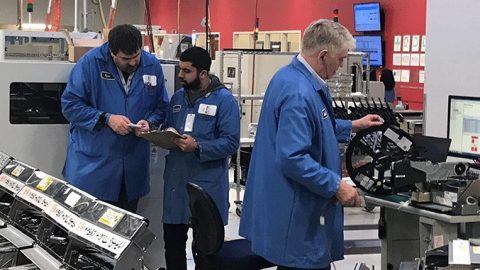
Photos at the Factory
To win its second IW Best Plants Award, Applied Technical Services turned crushing supply challenges into unrivaled success.
Tucked into a neat industrial park in Everett, Washington, ATS provides a full spectrum of solutions and services around printed circuit board production—from assembly and box builds to testing and engineering.
In our IoT-crazed, smart-everything world, with circuit boards embedded in every product from sneakers to streetlights—ATS has found itself in one of the hottest markets imaginable. But that hotness comes at a price.
“Demand outstrips supply” George Hamilton, ATS CEO explains: the rush to add digital intelligence into every product—and especially autos—has strained the suppliers of the diodes, transistors, capacitors and all those microscopic circuit board components far beyond capacity.
This deficit has left manufacturers like ATS in a tough situation.
“We saw lead times [for components] go from four weeks to 16, from 18 to 52,” he says. “And, of course, when supply goes down, prices have to adjust.”
However brutal it was, though, ATS was able to do something rather incredible. Despite swallowing the rising component costs, it has increased revenue by 18% year-over-year for the past three years; despite record-low unemployment, it grew production headcount by 126%; despite bloated lead times and part shortages, it achieved 99.6% on-time delivery; and despite all of these market issues and demand crises, it increased its first-pass yield by 22%. In other words, ATS grew, it improved, and it succeeded in spite of the most brutal conditions possible.
The fact that the plant and its 247 workers succeeded marked it as an easy choice for a Best Plants finalist. How did it succeed?
Serving the Customer
Hamilton lays out the general recipe for success at ATS rather neatly. It’s by “systematically getting better, by putting in processes and procedures, and by following lean principles,” he says.
But what sticks out this year is the culture in the plant that drives it to push through limitations, to succeed in difficult times, to endure years like 2018 to help serve their customers.
The best example of this relates to the supply crisis—a challenge that pulled in every level of the plant to overcome.
“When we can’t find components, we need to redesign the whole board,” Dubbs says.
Productivity and Quality Office